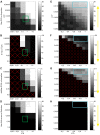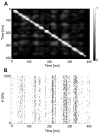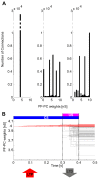Adaptive robotic control driven by a versatile spiking cerebellar network
- PMID: 25390365
- PMCID: PMC4229206
- DOI: 10.1371/journal.pone.0112265
Adaptive robotic control driven by a versatile spiking cerebellar network
Erratum in
-
Correction: Adaptive robotic control driven by a versatile spiking cerebellar network.PLoS One. 2015 Mar 5;10(3):e0118518. doi: 10.1371/journal.pone.0118518. eCollection 2015. PLoS One. 2015. PMID: 25742487 Free PMC article. No abstract available.
Abstract
The cerebellum is involved in a large number of different neural processes, especially in associative learning and in fine motor control. To develop a comprehensive theory of sensorimotor learning and control, it is crucial to determine the neural basis of coding and plasticity embedded into the cerebellar neural circuit and how they are translated into behavioral outcomes in learning paradigms. Learning has to be inferred from the interaction of an embodied system with its real environment, and the same cerebellar principles derived from cell physiology have to be able to drive a variety of tasks of different nature, calling for complex timing and movement patterns. We have coupled a realistic cerebellar spiking neural network (SNN) with a real robot and challenged it in multiple diverse sensorimotor tasks. Encoding and decoding strategies based on neuronal firing rates were applied. Adaptive motor control protocols with acquisition and extinction phases have been designed and tested, including an associative Pavlovian task (Eye blinking classical conditioning), a vestibulo-ocular task and a perturbed arm reaching task operating in closed-loop. The SNN processed in real-time mossy fiber inputs as arbitrary contextual signals, irrespective of whether they conveyed a tone, a vestibular stimulus or the position of a limb. A bidirectional long-term plasticity rule implemented at parallel fibers-Purkinje cell synapses modulated the output activity in the deep cerebellar nuclei. In all tasks, the neurorobot learned to adjust timing and gain of the motor responses by tuning its output discharge. It succeeded in reproducing how human biological systems acquire, extinguish and express knowledge of a noisy and changing world. By varying stimuli and perturbations patterns, real-time control robustness and generalizability were validated. The implicit spiking dynamics of the cerebellar model fulfill timing, prediction and learning functions.
Conflict of interest statement
Figures











References
Publication types
MeSH terms
LinkOut - more resources
Full Text Sources
Other Literature Sources
Molecular Biology Databases

